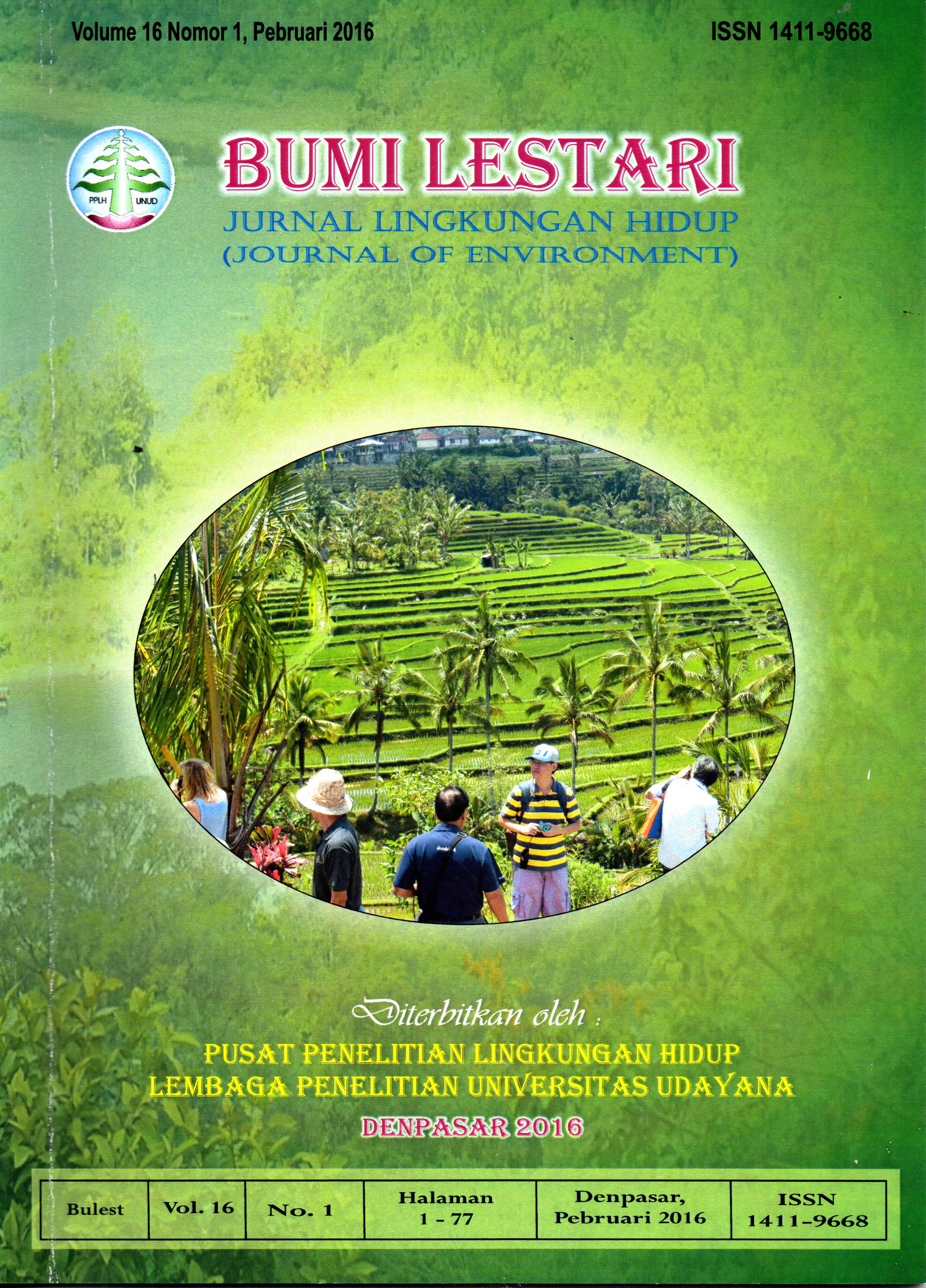PENGELOLAAN CULTURAL LANDSCAPE PURA BATUKARU SEBAGAI DAYA TARIK EKOWISATA
Abstract
The research aims to uncover the potential and management Cultural Landscape PuraBatukaru (Batukaru Temple) as the appeal of ecotourism in Tabanan and Bali in general.The study was conducted by the method of data collection and analysis. The data collectionis done by observation, interview (dept-interview), and literature study. The data wereanalyzed descriptively qualitative.The study showed that Pura Batukaru reserve that has been set by UNESCO as part ofthe World Cultural Landscape of Bali can be classified into Associative Cultural Landscape(Associative Cultural Landscapes). More details, namely the associative cultural landscapenuances of local culture (Bali). Cultural landscape nuances of local culture Bali includesthree main components of the environment (human-nature-god) in the relationship andinteraction interdependence known as Tri Hita Karana.Based on the names of palinggih (shrine), namely Pucak Kedaton / Sang HyangTumuwuh, and figures of other gods), stone shrines (natural stone) and communities tomanage these (community Bali Age / Bali Mula and Jero Kubayan), historically likelyHeritage Pura Batukaru already exist on prehistoric times (Neolithic-Megalithik). Then,when the kingdom’s political system (mornachi) introduced by Hindu culture, figures ofkings (royalty) was also honored at the site by building shrines as media for ancestralworship.Cultural Landscape of Pura Batukaru can be classified into Associative CulturalLandscape (Associative Cultural Landscapes), namely the associative cultural landscapenuances of local culture (Bali). Cultural landscape nuances of local culture Bali includesthree main components of the environment (human-nature-god) in the relationship andinteraction interdependence known as Tri Hita Karana.Heritage of Pura Batukaru with its jajar-kumiri network (pecan row) and relationswith Ulun Danu Tamblingan form a sacred area (sacred cultural landscape of Batukaru)and the rituals and myths that exist in it has important value in maintaining and preservingthe natural environment for a variety of purposes and interests of the community andgovernment in development, especially the development of ecotourism in a sustainablemanner in Tabanan and Bali in general.Downloads
Keywords
Authors who publish with this journal agree to the following terms:
- All articles published by Bumi Lestari Journal of Environment and Environmental Reseach Center Udayana University are made available under an open access license worldwide immediately. This means everyone has free and unlimited access to the full-text of all articles published in Bumi Lestari Journal of Environment, and everyone is free to re-use the published material given proper accreditation/citation of the original publication. Open access publication is supported by authors' institutes or research funding agency by payment of a comparatively article processing charge for accepted articles (See Author Fees). Bumi Lestari Journal of Environment and Environmental Reseach Center Udayana University publish articles under the Creative Commons Attribution License.
- Authors are able to enter into separate, additional contractual arrangements for the non-exclusive distribution of the journal's published version of the work (e.g., post it to an institutional repository or publish it in a book), with an acknowledgement of its initial publication in this journal.
- Authors are permitted and encouraged to post their work online (e.g., in institutional repositories or on their website) prior to and during the submission process, as it can lead to productive exchanges, as well as earlier and greater citation of published work (See The Effect of Open Access).





